
‘When I walked down the stairs to the Segal Centre’s CinemaSpace in Montreal on May 18, I had no idea what I was getting myself into. That night, rough sexual images shocked and sometimes angered me; they stabbed at my biases and rigidity. But I’m sure I’m not alone: that’s just how it feels the first time you watch the work of American animator and filmmaker Lewis Klahr.
‘”People tell me when they watch my films, they experience long after-effects,” said Klahr, who has been using collage techniques to create experimental, sometimes disturbing films since the late 1970s. In an event titled “Lewis Klahr: Hieroglyphs of Lost Time,” the Segal Centre screened Engram Sepals, a series of seven short films depicting a decades-long downward journey of sex, drugs and alcohol. It pulls viewers into an eighty-one-minute orgy of substance abuse, confusion and sexual experimentation, and exposes American vices and anxieties. Shooting on 16mm film, Klahr used images cut from from magazines, comic books and ’70s porn rags, as well as old Super 8 footage, to create distinctly adult animations.
‘Klahr, who was in attendance at the event, explained that the short stories he told in his films were really about discovery. He carefully sourced and selected each image he used in his collages and, he said, everything has a meaning; just as the real world has structure, so do the worlds he created. He emphasized that music and images need to reinforce each other for a film to work. “I wanted the emotions like in a Dionne Warwick song, combined with experimental movies,” Klahr said.
‘The epic voyage of Engram Sepals began with the 1994 short Altair, a shifting collage of images from 1940s issues of Cosmopolitan. Behind the romantic images of well-manicured women, there was an underlying sense of doom. Klahr used blue-tinted backdrops and repeated images of cigarette cases, martini olives, cards and beds to evoke the feeling of addiction.
‘Altair—which is now included in the New York Museum of Modern Art’s permanent collection—was the tamest of the seven movies. The following film, Engram Sepals was even more sinister: Jimmy Olsen, the freckly young photojournalist from the Superman comics, was shown lying dead on the ground. Then, in Pony Glass, Klahr manipulated Olsen’s clean-cut persona by placing cut-outs of him in scenes of same-sex affairs, interspersing these with images of looming clocks and mid-century offices. Klahr, speaking after the show, admitted that experimental filmmakers often use repetition to encourage viewers’ personal interpretations of images, and the looping music and recurring images in Pony Glass underlined Jimmy’s identity crisis and sexual self-discovery.
‘As I was watching the series, my own brain started playing tricks on me, too. During Govinda, Klahr’s 1999 take on a coming-of-age story, I inwardly named a woman in the film “Sarah.” Listening to the Indian-influenced accompanying song and watching Sarah’s loss of innocence, I felt as if the vocalist was singing, “Run, Sarah, run.” As I watched her naively walk into a forest, like Eve taking a bite into the apple, I wanted to stop her. When her journey into the forest led her to drugs and group sex, I felt truly outraged. I did not like the chaos of the scenes. I wanted to put the world back in order. Who knew collage could be so emotional?
‘At the beginning of the second half, Klahr warned the spectators at the Segal Centre that the following material was not for everyone. And it’s not. Viewers would go on to witness orgies, cut-outs of drugged-out porn stars having rough sex and, with the final piece, A Failed Cardigan Maneuver, I experienced a longing to return to the relative innocence at the beginning of the film. “I needed the courage and self-permission to go where those images could take me,” Klahr said. A rake poked at the characters’ anuses and scratched the surfaces of their skin; a needle was inserted into a penis; I couldn’t help but cringe. “Even though you’re not involved, they [images] still hurt,” Klahr said. “You’re feeling those things.”
‘For days after seeing Engram Sepals, I had an urge to analyze every cut-out and make sense of my experiences. I wanted Klahr to explain his imagery so I could file it, label it, make sense of it. But Klahr’s films stubbornly refuse to be classified.’ — Renee Giblin
___
Stills




















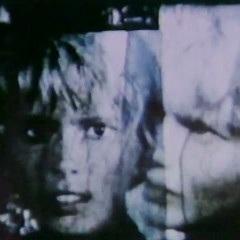
























_____
Further
Lewis Klahr @ IMDb
Lewis Klahr @ LUX
Review: Sixty Six
Lewis Klahr @ Anthony Reynolds Gallery
Collage. A Conversation with Lewis Klahr
An Evening with Lewis Klahr
Flotsam and Jetsam: The Spray of History
Lewis Klahr @ Experimental Cinema
THIS LONG CENTURY
Circumstantial Pleasures
Complicating a Simpler Time: Lewis Klahr’s Collage Films
Lewis Klahr’s Sixty Six is a masterful journey through inner space and the American past
Observations on film art : Lewis Klahr X 3, X 4 – David Bordwell
Lewis Klahr’s trinket dreamscape
GOING KLAHR
_____
Extras
Studio Visit with Filmmaker Lewis Klahr
Johann Carlo, Willem Dafoe, and Kate Valk in Lewis Klahr’s “The Diptherians Episode Two”
Battle Hymn for Insurgent Arts—David Rosenboom and Lewis Klahr
_____
Interview
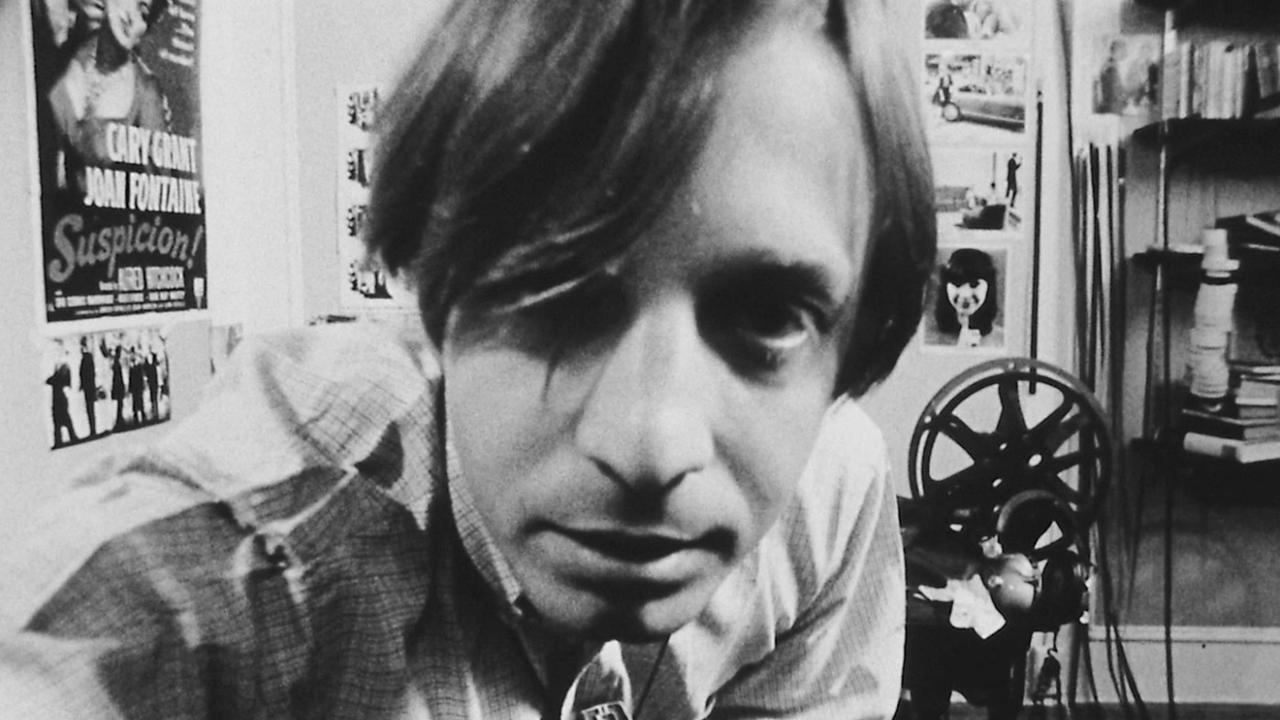
Toni D’Angela: I’d like to talk a little bit about the practice of collage. How did you “meet” the collage? How have you experienced this artistic practice? How and when did you start?
Lewis Klahr: It was very much in the air in NYC in the late 1970’s after i graduated from college. Found Footage filmmaking was emerging as a dominant genre in experimental film circles. I saw several Wooster Group theatrical productions which had a very strong effect on me. Collage was attractive because it allowed me to explore the past in terms of personal memory and history.
TD: Did the collages of Picasso and Braque (around 1912) and the “montage” of the Berlin Dadaists (around 1916), have an influence on your personality as artist?
LK: Not much. Cubism didn’t make much sense to my eye. The Surrealists, Schwitters and Max Ernst did. But in terms of 2-d work Schwitters and Rauschenberg offered the most initial interest and inspiration. I saw Rauschenberg’s silk screen paintings before I knew I wanted to be a visual artist when I was in high school and was struck by their texture, superimposition and the way they used newspaper imagery that I recognized from my childhood.
TD: The collage is also came into the American painting, the late Modernism. One of the first exhibitions of abstract expresionism was called “Exhibition of Collage”, but even before 1942, and before the works of Robert Rauschenberg during the ’50, it was Joseph Cornell the artist who had introduced the collage in the visual arts and into the american experimental film. What do you think was his most original contribution? And how Cornell has inspired you? If he did…
LK: I didn’t know Cornell’s work until 1980 and the extensive MOMA retrospective that I was fortunate enough to be in NY to see. I went 5 times as it was a huge turning point for me. From my encounter with his work, I was convinced that collage was the mode I most wanted to work in. Cornell was especially helpful to me in two regards: emotion and revery. His work granted me permission to create emotion-centric films. It also gave me a powerful first hand experience of a kind of ‘eternal time’ that could be glimpsed while in the revery of viewing art work. While I had had this latter experience of altered time throughout my life, viewing movies and listening to music, seeing Cornell’s work was the moment I consciously defined this experiences importance to me as a film artist and its depiction as a goal of what I aspired to create.
TD: What about the collage of other masters of the experimental film as Harry Smith, Robert Breer (even though both are not totally identifiable with the practice of collage) and Larry Jordan?
LK: I admire and was inspired by the work of all 3. Larry Jordan’s Our Lady of the Sphere was the film I saw that alerted me to what could be done with cutouts. The way he, Harry Smith and Ernst had made use of Victorian cutouts made me feel that I could do something similar with more recent outmoded mass imagery from my own childhood.
TD: Apart from these references probably well known, what can you tell me of the (other) sources that have inspired you?
LK: Influence is a funny thing. It is very broad – it includes the obvious: Jacobs, Warhol, Anger, Conner but in some ways I was effected more by certain movements or moments then filmmakers. For instance Psychodrama figures large with its exploration of the mythic, symbolic, pyschological self and depiction of the subjective hooked to narrative. Or the eclectic and diverse approach to filmmaking at the Collective for Living Cinema in the late 1970’s.
Often overlooked because I shared more of an outlook and sensibility than a direct obvious relationship with their work (they weren’t making cutout films though many were grappling with appropriation) are my extremely formidable and exciting fimmaking peers: Peggy Ahwesh, Mark Lapore, Phil Solomon, Ericka Beckman, Julie Murray, Nina Foneroff, Scott Stark, Esther Shatavsky, Craig Baldwin, and of course, my wife Janie Geiser (as both a filmmaker and theater artist).
And then there’s the poet and scholar Walter Lew who I’ve been in aesthetic dialogue with since my early 20’s. Or the scholar Tom Gunning who has certainly had as much influence on me as any fimmaker.
And finally there’s the history of narrative filmmaking and in particular classic Hollywood. I still spend more time looking and thinking about the latter than any other kind of filmmaking. Some key directors for me – Jean Epstein, Jacques Tourneur, Jean Cocteau, Jean-Pierre Melville, Vincente Minnelli, Max Ophuls, Otto Preminger, Nick Ray, Wim Wenders. But then there’s individual films, too numerous to mention, like Sylvia by Gordon Douglas or Hercules in the Haunted World by Mario Bava or Welles’ Mr. Arkadin. These three probably tell you more about my aesthetic choices and interests then anything else on the above list in the way they marry the high and the low, the hidden and the blunt, poverty and the sublime.
TD: What do you think of found footage? Today is a practice very developed and almost predominant in a certain kind of cinema, and in filmmakers that are different among them, we could quote Gianikian and Ricci Lucchi, William E. Jones, actually yourself, for your usage of it in Her Fragant Emulsion.
LK: I had began making films in 1977 and Her Fragrant Emulsion is from 1986-87. It is my first film to receive a good deal of critical attention however.
Found Footage was a genre I paid attention to – it was so dominant for such a long time that it was impossible not too. But it is a genre that peaked in the 1990’s and I don’t go out of my way to look at much now. And in the past Bruce Conner, Morgan Fisher, Godard… The collage, of course, is different from found footage, but they are practices that have something in common, they have been associated and related.
I understand found footage filmmaking to be a vital branch of collage. Anytime one uses appropriated imagery one starts to enter the collage realm.
In my maturation as a film artist, found footage filmmaking was a stage of development– a half way point between shooting live action films in the world and working with cutouts which has been my primary form of address. In my case, I needed to move onto working with cutouts to get the control I desired over appropriated sounds and images.
TD: Can you describe your relationship (feeling, critical thought…) with the images, the signs, the archives of the past?
LK: That’s a huge topic that my films address better than I can in words. But for me the most uncanny experience I’ve ever had is the difference between the past and the present. It’s a mystery I can’t resolve for myself – how things are present and new and then age and disappear. It’s the shape of life lived.
TD: It can be said that the melancholic tone of your works is not just simple nostalgia, but a way to challenge the “identity” of the present, to make it larger, a way to open the present to the past, a way to broaden the horizons at least?
LK: Thanks, that’s beautifully articulated and I aspire for my work to have that effect. My subject is concerned with, to quote Tom Gunning, “lived time” more than a desire to merely time travel backwards. Though i find nothing wrong with that very human impulse and would like to add that I find simple nostalgia to be infinitely more complicated than most people give it credit for being. I’m continually surprised by how threatening and frightening simple nostalgia seems to be for so many people. To me, making art about the past always reflects many things about the present tense it is being authored in. It can’t help but do that. I like to describe my work as describing the pastness of the present.
Melancholy is important to me in several other ways – first of all despite the sadness, regret and/or longing it contains, it also contains a great deal of ecstasy. Melancholy also affords me a way in to the timelessness of revery which is important to my work process and the impact of my finished films.
TD: In Lethe and False Aging there is a sort of invitation to practice a certain oblivion to rediscover the tradition too, to see it with different eyes and discover something new. So maybe everything was already invented, like it says, (I think of modernism and the avant-garde cinema too), but it’s still possible re-invent it… Even through the process of hybridization of genres and materials… The past, tradition, tradition of modernism too, the myths of American society, as are the clouds of Trilogy of Nimbus: they are full of materials, images, archives, signs, but you know how to get out something new from them, not only to quote them…
LK: Thanks, that’s high praise. I’m glad my work speaks to you so eloquently. I understand some of what you’re describing as a crucial element of our time, that mass media and now electronic culture, has certainly made media absorption a significant part of daily, urban life throughout my lifetime. I have a necessity to grapple with what I’ve absorbed as do many others. My ability to project my thoughts and experiences into my source materials via the moving image is crucial to creating what you’re experiencing as a viewer of my work.
When I was 15 I read Black Elk Speaks which was an oral biography of a mystic Sioux Medicine Man who was Chief Crazy Horse’s cousin. He was at the Battle of the Little Bighorn and toured with Buffalo Bill to Europe among other highlights.
Black Elk describes in great detail his various visions. Many center around horses as these were essential animals in the Sioux lifestyle. In my urban and suburban world, horses and Buffalo didn’t figure. In my world, horses had been replaced by cars as a mode of travel. But I could recognize a correlation between Black Elk’s ability to name different horses and my ability to name types of cars or pop songs on the radio.
So for me naturally, as I convey the mythic understanding of the world I inhabit, the latter figured prominently.
The Nimbus Trilogy, that you site above, works to illuminate change through repetition. Just like the so called structural filmmakers who preceded me (Frampton, Snow, Landow, Gottheim) I am posing perceptual riddles for my viewers by presenting a complete 8 minute film (Nimbus Smile) which is then followed by a film (Nimbus Seeds) of the same duration with the same image sequence but an entirely different soundtrack. In the third and concluding film (Cumulonimbus) the sound track from the second film repeats while the image sequence completely changes. These recombinations evoke different stories and meanings in each of the films.
TD: Can I say that your animation/collage is a way to challenge the idea of private property, ownership, Identity (present like identity and identity like present), a way to continue to keep open the “conversation”, a sort of endless entertainment, as Blanchot said, or dissémination (Derrida)?
LK: Yes appropriation is both a way to question ownership and issues of copyright as well as artistic authorship. As a collage artist I am both collaborating with my source materials by both changing them and leaving them intact. For me the necessity to work with what I have absorbed outweighs my interest in respecting the capitalist boundaries established by copyright law which are mostly concerned with profit and a price structure that I don’t have the financial resources to participate in. To me there is the obligation of the mass source materials in question and their responsibility after ingestion by the culture which is something copyright law doesn’t respect, takes for granted and/or overlooks. Collage and appropriation is part of the culture’s digestion process. I am of the firm belief that such cultural digestion is necessary for the culture to stay psychically healthy.
Similarly with artistic authorship – as a viewer and a maker, it is less important for me who invents or originates something then which artists bring it to life.
TD: Do you see something new and interesting in the current landscape of experimental film, moving images, etc., related to your work (animation/collage)?
LK: I am more interested in what I find interesting and stimulating then what is new. But there are many younger artists whose work excites me and I’m in dialogue with. To name a few: Jodie Mack, Ben Rivers, Ben Russell, Fern Silva, Stephanie Barber, Karen Yasinsky, Inger Lise Hansen, Blake Williams, Mary Helena Clark, Laida Lertxundi and Michael Robinson.
TD: When you started to work it was with “film”, now, for several years, you are working in video. What’s the difference and how it has changed your work? You know, many people are talking of death of film or cinema…
LK: Cinema to me is not the material of film itself but all the different aesthetic ways and approaches filmmakers have of creating moving image pieces.
So for me it has not been a very large adjustment. I did wait to make the switch until I saw that digital video’s resolution was equivalent to 16mm but now in the last few years it is more equivalent to 35mm.
Digital Video is different in very positive ways for me – my work is now capable of being shown to much larger audiences via streaming and in theatrical spaces with my intentions still visible and clear. Often when I worked in Super 8 and 16mm my finished films were somewhat dark and didn’t project that successfully even in a small space. For instance the first time I was included in the Whitney Biennial in 1991 the super 8 films I was screening had to be screened with my projector in the room to convey their color successfully. The room was very small, but it was still too long a throw for a super 8 projector for the intensity of the color I had photographed to be visible if the projector had been placed in the booth.
Digital video enhances texture which is also very good for my work. It is very clean and detailed and while this might be a bit of a limit for live action shooting, since I’m shooting my analog source materials, they tend to provide a kind of dirt and grit that has some of the feel of analog and the film stocks of 16mm.
Shooting, editing and printing Digital Video is less expensive then shooting super 8 even was. This has made me very very prolific which has greatly re-invogorated my aesthetic. Making a feature length work is no longer a major financial investment.
Where Digital Video is precarious, a huge step backwards and ongoing challenge, is in archiving finished work and working to keep it current with all the tech upgrades which come at an unbelievable rate of speed- 3 years is a lifetime. In contrast traditional film has remained virtually the same technically for the past hundred or more years. Film Stock if properly stored can last for many decades, hard drives unfortunately can not.
TD: About death… Watching April Snow, I thought of a mixture of Dali (watches) and Ruscha (cars), it’s also a voyage into a great american myth: the car, from fordism and its ideology to On The Road, a symbol for the consumer society but also for dreams: dreams of family to get economical safety, dreams for young people to escape and live an experience… The drive experience was important for artists too: Tony Smith, Ed Ruscha… Today the road seems to be replaced by the eletronic-virtual road, can I ask you what do you think of that?
LK: Above I talked about cars and their mythic importance to the world I live in and Black Elk the Sioux Medicine Man. I’m glad that April Snow was able to send you off into such an extensive associational revery about all those larger connections, however, I undertook it with a more specific mythology of aging in mind – that place in young adult hood where one can feel forced to choose between the love of ones youth and more grown up responsibilities. It’s a kind of moment that many experience as a death in life. I was thinking of my dear late friend, the great filmmaker Mark Lapore, who was very interested in this kind of moment where things are in transition.
TD: Last question: how do you do your films? I mean, I am asking you as if I was a naif. If someone did not know anything of collage and animation, how would you explain your work to them?
LK: My films are very simple to create technically. I work with a digital still camera set up on a tripod and compose my cutouts on a little table beneath the lens or on the floor of my garage studio (there’s the car again! Or in this case, the repurposing of a space designed for one. In Los Angeles garages are very important spaces for much creative activity that doesn’t involve cars). The cutouts are illuminated by mostly a single light source – a 250 watt, 3200 Kelvin balanced bulb.
Before I worked in digital, I had the same shooting set up with a 16mm Bolex or a super 8 camera. In my present digital set up, the imagery I photograph frame by frame, feeds into my computer where a wonderful animation program called Dragon organizes the individual frames into shots. All of this activity is stored on a hard drive. I edit on the computer, and am still using Final Cut Pro 7, although that will have to change next time I upgrade my computer.
________________
12 of Lewis Klahr’s 32 films
________
Hi-Fi Cadets (1989)
‘A small classic during which a TV emblazoned ‘1960’ boldly appropriates John F. Kennedy, providing his image with a strange form of afterlife.’ — MUBI
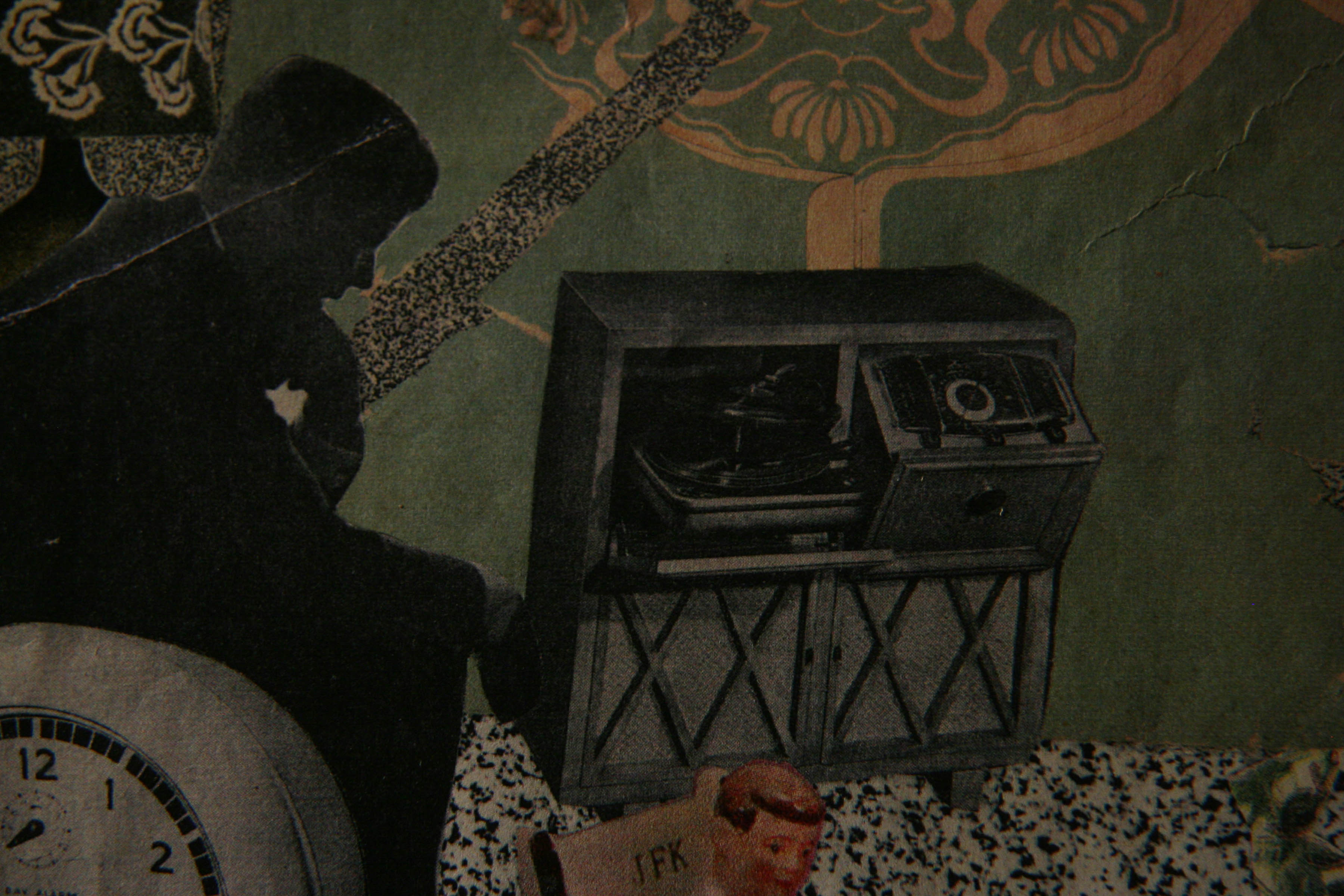
Watch the film on Daylimovies here
_____________
Station Drama (1990)
‘STATION DRAMA is a silent, black-and-white Super-8 film from RIGHT HAND SHADE, the fourth and final section of my twelve film series TALES OF THE FORGOTTEN FUTURE. This section explores via collage cutouts, thematics related to the genres of the bio-pic, home movies and the actuality film. It stars dancer/choreographer Paula Clements Sager as a fictional early 20th century aviatrix that was inspired by “West with the Night,” the autobiography of real life early aviation hero Beryl Markham. Combining cutouts with live action superimpositions of old media (a metal record, a radio dial and a nickelodeon), the story follows the fabled life of my fictional aviatrix from childhood to circus and WWI fame that brings on a personal crisis. This film is one of my personal favorites of all my work but also, is unfortunately, one of the least known and seen.’ — Lewis Klahr
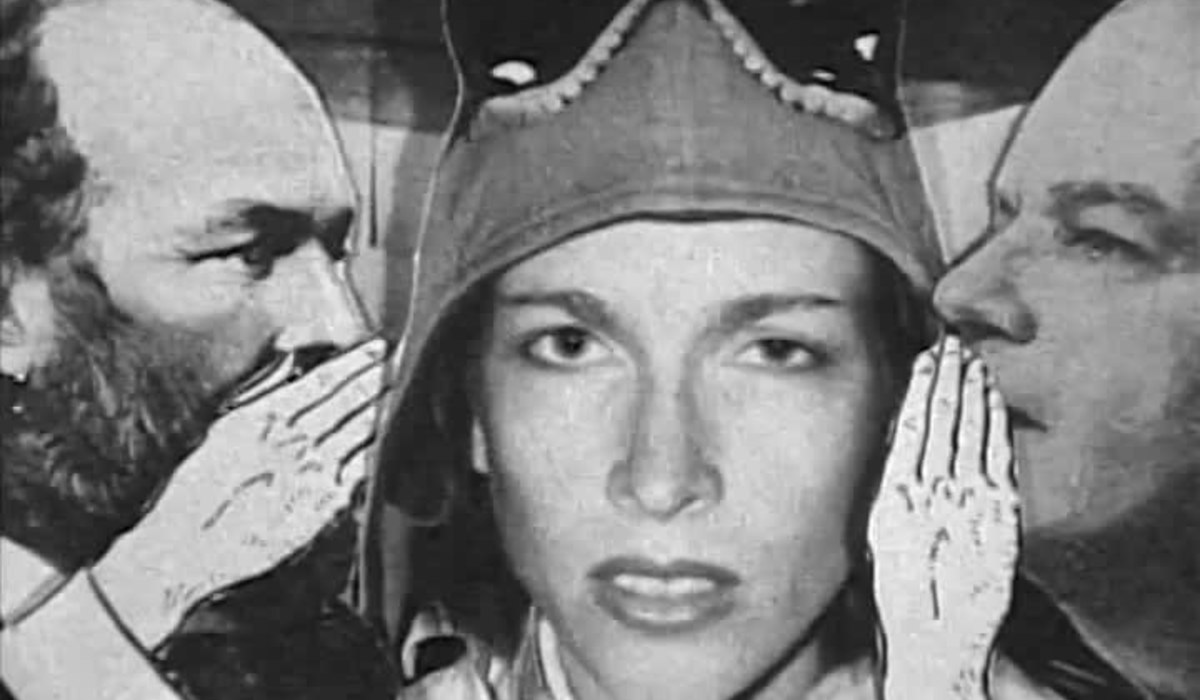
_______________
The Pharaoh’s Belt (1993)
‘In its use of popular imagery and its creation of a ironic modern fairy tale, THE PHARAOH’S BELT explores these issues in a manner without parallel in an avant-garde mode of filmmaking, better known for its disavowal of the commercial than its radical engineerings.’ — National Society of Film Critics

__________
Altair (1995)
‘ALTAIR offers a cutout animation version of color noir. The images were culled from six late ’40s issues of Cosmopolitan magazine and set to an almost four-minute section of Stravinsky’s “Firebird” (looped twice) to create a sinister, perfumed world. As in my 1988 visit to this genre, In the Month of Crickets, the narrative is highly smudged leaving legible only the larger signposts of the female protagonist’s story. The viewer is encouraged to speculate on the nature and details of the woman’s battle with large, malevolent societal forces and her descent into an alcoholic swoon. However I feel it is important to add that what interested me in making this film was very little of what is described above but instead a fascination with the color blue and some intangible association it has for me with the late 1940s.’ — LK
the entire film
_________
Lulu (1996)
‘Initially commissioned to accompany a Danish production of Alban Berg’s LULU, Lewis Klahr’s cut-out animation refigures the opera’s themes in a torrent of images. With an ever-inventive approach to color and symbol, Klahr distills the title character’s moral predicament, along with a great many of German Expressionism’s characteristic motifs, in the span of a pop song.’ — Fandor
the entire film
____________
Pony Glass (1997)
‘Superman sidekick Jimmy Olsen is overrun with sexual delirium in this improbably expressive cut-out animation. Lewis Klahr mines the latent anxiety of his midcentury materials to entrancing effect, steering the hieroglyphs of comic books and advertising towards a roaring melodrama in three acts. Nostalgia has rarely seemed less innocent.’ — Fandor
the entire film
______________
Elsa Kirk (1999)
‘In the mid-1990s I unearthed photographic contact sheets of different women in a thrift store in the East Village. Only one was named and dated: “Elsa Kirk, Feb 22 ‘63.” But all looked like they were from the same photographer and time period. There were twelve images per sheet of these models/actresses and I found myself intriqued by the strong sense of fiction and document in these photos. ELSA KIRK and CATHERINE STREET are two of the films I created from these contact sheets. At first, I was unable to translate these images into collage animation. So I reversed my usual process and began making Xerox enlargements of the sheets which became backgrounds for a series of flat collages. Gradually, these became storyboards for the films and led to the hieroglyphic montage style of the completed trilogy, an approach that I had intuited when first attracted to the potential of cutouts two decades before but had never been able to capture on film.’ — Lewis Klahr
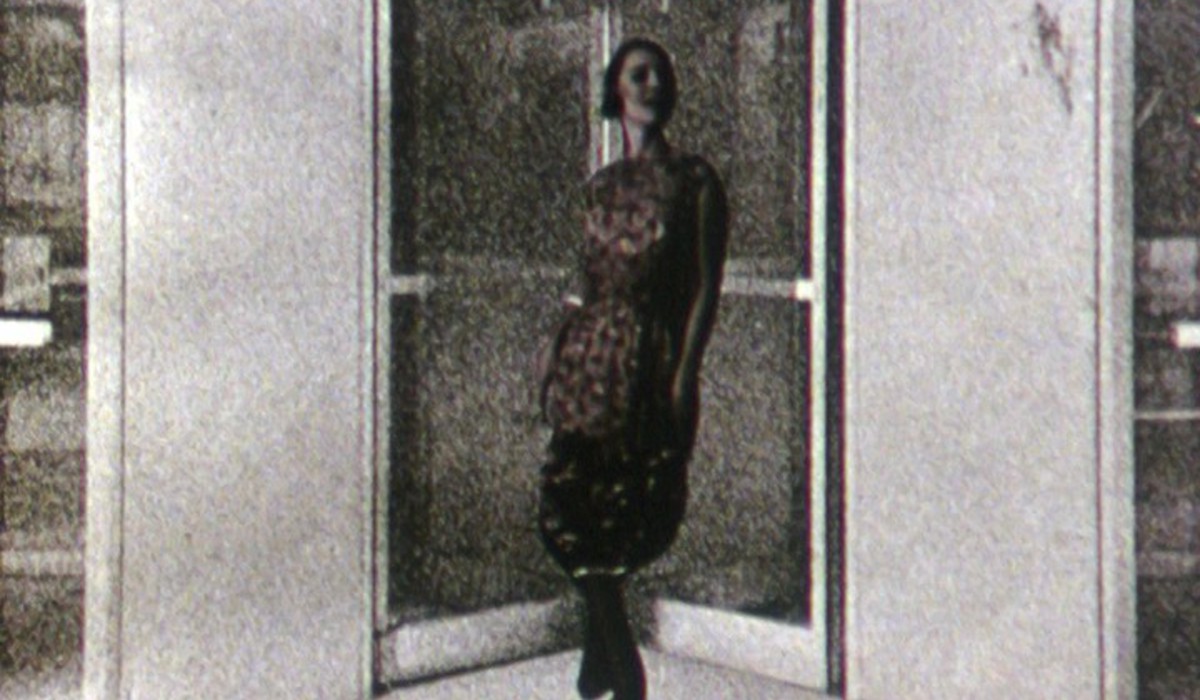
_____________
False Aging (2008)
‘Klahr injects False Aging with such a restless, melancholy oddness (ice cubes memorably circling around a telephone) that by the time his film concludes with Warhol’s last doubts and ponderings (as sung by John Cale), we’re sure there’s something very special going on.’ — IFFR
the entire film
_______________
The Pettifogger (2011)
‘A year in the life of an American gambler and con man circa 1963. A diaristic, first person montage full of glimpses, glances, decaying ephemera and elliptical narrative. An abstract crime film and, like many other crime films involving larceny, a sensorial exploration of the virulence of unfettered capitalism. An impressionistic collage film, culled from a wide variety of image and sound sources that fully exploits the hieroglyphic essence of cutouts to ponder what appropriation and stealing have in common.’ — Fandor
message from Director of The Pettifogger Lewis Klahr
______________
The Moon Has Its Reasons (2012)
‘The Moon Has Its Reasons is an elliptical melodrama about romance, open to viewer interpretation.’ — Tribeca Film Festival
the entire film
_______________
Sixty Six (2015)
‘Messages and portents bubble up throughout Lewis Klahr’s 90-minute, 12-episode feature Sixty Six, which poetically fuses images and ephemera of the Sixties with Greek mythology. It begins with the brief film “Mercury,” in which light-box-illuminated double-sided pages from Flash comics evoke the fleet-footed messenger god. A pulp serial that shimmers with potent emotions and fragmented memories, Sixty Six is made up of digital films Klahr began working on in 2002 and fittingly opens with an epigraph from Paul Eluard and André Breton: “Let the dreams you have forgotten equal the value of what you do not know.”’ — Film Comment
Excerpt
______________
Black River Falls (2017)
‘Music by Dick Connette from his album, Too Sad for the Public Vol. 1: Oysters Ice Cream Lemonade. Suzzy Roche sings the vocal. Dick’s lyrics were inspired by the reknowned photography book, Wisconsin Death Trip.’ — letterboxd
the entire film
*
p.s. Hey. ** Kier, Hey! Yes, as you know, we’ve got our mutual haunted house adventure squared away. I’ll check about cool events during your duration. Artwise, FIAC is happening around then, and the art scene always goes very out of its way to try to impress the visiting art world dignitaries, so there should be some cool stuff. I haven’t been to the perfume museum. I would def. go, and it’s about an 8 minute walk from my pad if we’re thinking of the same museum. I’m pretty good. Oh, man, take really good care of yourself so you’ll show up here rarin’ to go. Sure, I’d love to meet øyvind, great! Love, me. ** Dominik, Hi! He’s definitely spooky and fascinating. It would be so interesting to interview him and see what he either knows about himself or can articulate. No real hard deadline on the new script version, just as soon as we can so that, ideally, they’ll green light it asap and Gisele can then start planning out her schedule re: shooting it. I haven’t read Bertie Marshall’s book. I did a reading with with him once. His reading wasn’t so good, but he was nice. How’s the book? My weekend just kind of eeked by, I think. I think I just worked on stuff and wrote emails and took some walks and stuff, although I’m probably forgetting things, but if I’m forgetting them they probably weren’t too scintillating. Oh, no, about your foot! What was it? A nerve-related thing? I hope it was just a confusing, very temporary quickie situation. Let me know when you can, on Friday if nothing else. I send you strength in every way! ** Misanthrope, Hi. I accidentally watched the ‘ASiB’ trailer, and, seriously, it is extremely not my thing. But your enjoyment courtesy of it is only good. Not much interest in me re: ‘Bohemian Rhapsody’, but I’ve never been a big fan of Queen. Nothing against them, just no excitement. Well, I would say satisfaction is pretty partial and fleeting about something when it’s still in progress. Once the cake is iced, then it’s verdict time. ** David Ehrenstein, I remember being charmed and pleased by the Judy Garland ‘ASiB’, but it’s been ages. ** Sypha, Hi, James. Yes, I think I was weirdly spacing out yesterday because of course I know the Mary Shelley novel. Or know of it. I haven’t read it, unless I did back in high school or something and lost that memory, but yeah, sure. Interesting about its impact on the pant-pant-inspiring ‘Harlem Smoke’. Ha ha, I’m pretty that for me watching ‘ASiB’ would be the exact opposite of living dangerously. Thanks for the great news about the Jean Lorrain novel. I’ll definitely score that. ** Steve Erickson, Curious to read your Bronski Beat take. I certainly hope you’ve seen your doctor and/or feel infinitely less pain. When I was young, early teens, it was very, very hard to see foreign films undubbed, or, well, to see foreign films in the US at all really. ** _Black_Acrylic, Hi, Ben. Great, great about the continuing and snowballing positive effects! You know, very strangely, I have never even peeked inside Viz Magazine despite its legendary status. I”m going to see if I can find a copy here in the big P and change all of that. ** Jamie, Hi, J! Very glad you loved the post. I’m fond of it. I’m fairly good. Yeah, my good old reliable optimism is starting to tip the balance. Dude, only ever wonder why you’re writing something you’re writing or what you’re doing if it excites you to wonder about the strange forces within you. That’s my motto. Oh, right, I forgot about Nuit Blanche for good reason. It just sucked eggs this year. I went out into it for a bit. Not even five years ago it was a total blast with lots of crazy installations and performances and city makeovers by artists famous and new and a real tripfest. But now it’s just like a crappy, scattered funfair. Break dancers, food trucks, shitty DJs, skimpily clad women giving free aerobics classes to a Michael Jackson soundtrack, guys playing soccer under blacklight wearing day glow uniforms, … The saddest. Thank you for that wonderful Tuesday. May yours whisk the building where you live away like the tornado in ‘Wizard of Oz’ and plunk it down perfectly intact in Tokyo. Your pocket full of billions of Yen love, Dennis. ** Right. Recently Jeff J brought up Lewis Klahr here, which caused to me to realise I’ve never devoted a post to his terrific work, which caused me to make one. Simple. See you tomorrow.



 Now available in North America
Now available in North America 
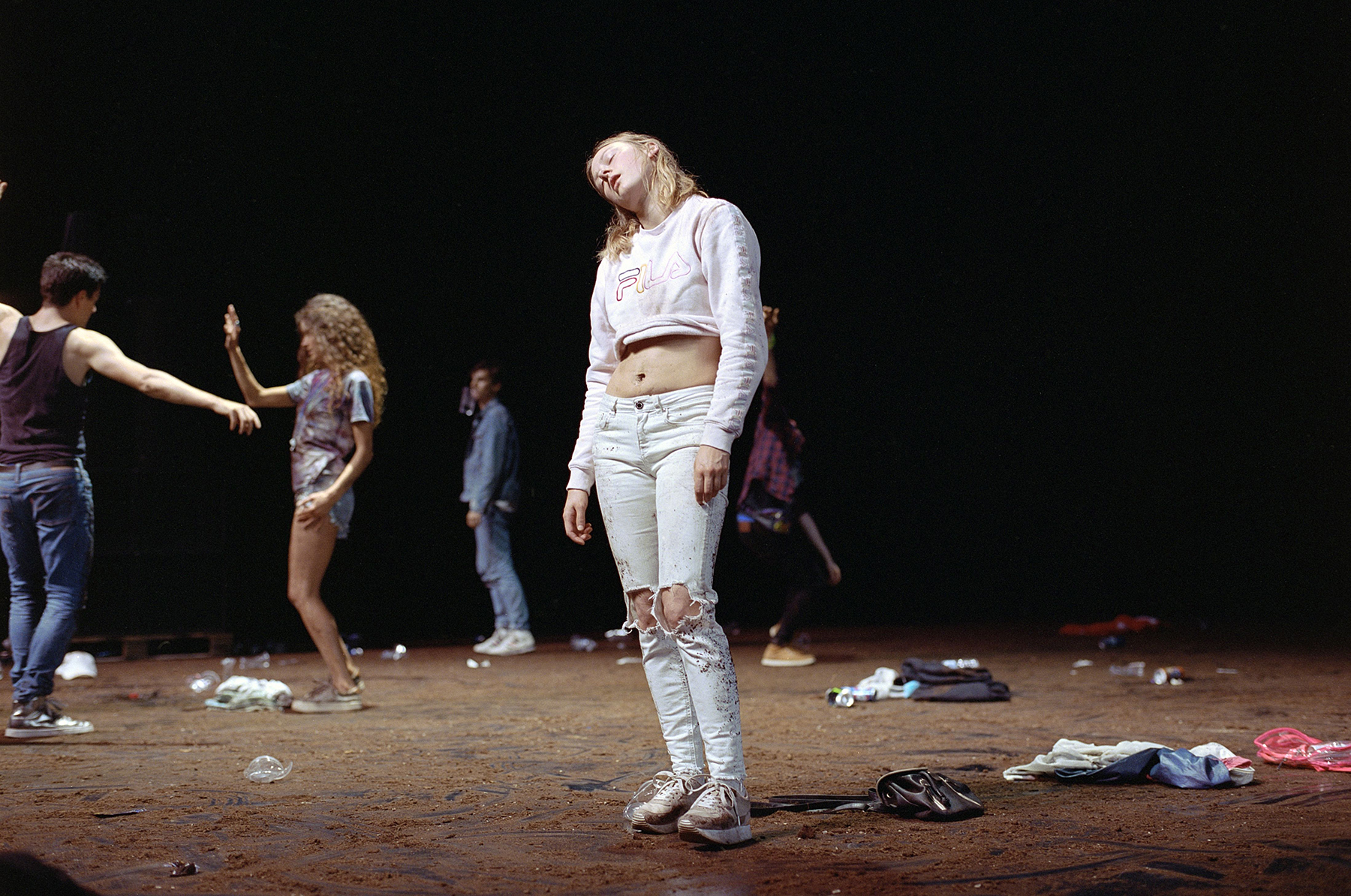 *
*
Dennis! Great post! Thank you! Too busy, can’t say much, but hope you feel a lot better!
Jonathan Rosenbaum has written about Klahr as has Jim Hoberman
Rather gobsmacked by that still of Kit Carson in “David Holzman’s Diary”
Just thinking about Kit as I was watching “Running On Empty” again yhe other night where he plays Christine Lahti’s radical ex boyfriend. The laat time I saw him was here in L.A. at the screening of “Out 1” back in
2007
God, it’s been forever. How are you? great posts as of late. I’ve been checking in every day. What to tell you. New duo with a great drummer John Thayer, did very loud gig with some really very interesting loud abrasive young bands, the other night, second time recently hearing stuff that’s quite unusual. new young bands coming up very exciting, best in years in my mind. I’ll keep you posted as I collect names and meet new peoples. No word from Aki. John and I will record soon, he works at a recording studio, could be a lot of access for little monies. The THEM video sound is nightmare. It will probably cost a lot to make it remotely usable. Tooth finally better, work, ah, great sex over the weekend, just livin. Hope the tv script is at least interesting or fun at times. how’s movement on the new film going, any work progression on the novel, best to Zac and love to you, of course
A great introduction to an artist I don’t know. Merci!
Weirdly, I still can’t reach my doctor’s office, even though things are back to normal in the US, but I feel much better and although there’s still a bit of pressure in my ear, I’m not sure I need to see him, at least not now or in the next few days.
I’m reviewing BOHEMIAN RHAPSODY for Gay City News and will be seeing it Thursday. I’m not a big Queen fan, although I’m fond of their first 3 albums; the excess of “Bohemian Rhapsody” itself helps explain why punk was necessary, but Freddie Mercury was a fascinating figure to me, even if lot of Queen’s music seems like a weaker version of Sparks. I’m not sure how to address the fact that Bryan Singer (who is credited as the only director on this film due to DGA regulations even though he stopped coming to work on the set, got fired and was replaced three months into the five-month shoot) has repeatedly been accusing of raping teenage boys without that taking over the review. I’m sure he’s an awful person – I’ve heard rumors about him holding orgies with drugged-up underage boys long before the #metoo movement started – but I only want to devote much space to that in this review if the film reflects it. Anyway, he’s far from the only person who created it, and I’m leery of turning the work of Rami Malek, Dexter Fletcher (the uncredited director who took over for him) or Queen themselves (with whom the idea for this film originated back in 2010) into his collateral damage.
I’m surprised you say it was hard to see foreign films when you were a teen. People your age constantly tell me that in the 1960s, everyone they knew went to see Bergman, Buñuel and Fellini films. Right now, there are still plenty of foreign-language films playing New York, but they tend to only play certain extremely niche theaters and close in two weeks, with few exceptions. CUSTODY is France’s pick for the Best Foreign Language Film Oscar nomination, and I believe it was a hit in France itself. There’s nothing inaccessible about it: it’s a drama about divorce and domestic violence with horror overtones (without being a genre film). It’s grossed $81,000 in the US so far.
This Day is my introduction to Lewis Klahr and I like what I’m seeing here. That Studio Visit film gives a good look at his methodology, so thank you for the primer. I’ve used collage in my own practice but always out of ideas rather than material, and it’s interesting to see Klahr’s Cornell-informed approach at work.
I’m feeling affected by insomnia brought about by this steroid medication I’m currently on. Tomorrow’s my final day of the treatment so I’m hoping for a clearer head soon. I recently won the DCA Twitter competition yet again, free tickets to see Noe’s Climax with Alex tomorrow, and we’ll see if my appreciation of the film is helped by this issue.
Dennis, I need to write these quotes down! You’re on a role!
Klahr, of course, is new to me. Seems to be something I’d be interested in. I need to explore further.
Yes, “ASiB” is not my thing either. I only went because my one friend wanted to go really bad. I’d have never seen it on my own or suggested it. I didn’t hate it and I don’t think it was bad. I tell you this, I won’t be seeing it a second time.
The Queen thing is something I don’t want to see, but this other friend really wants to see it. I’ll go for her.
And besides -and this is fucking horrible- it’s all kind of a deposit on getting them to go with me to see movies I want to see, hahaha. Of course, my luck, they’ll just say no and I’ll go by myself…which is okay by me.
Thanks for the introduction to Lewis Klahr. I’m kind of jaded about collage these days, but Klahr’s work is so witty, charming and surprising. The clever play with cinematic language is also very engaging.
Sorry to hear about the decline of Nuit Blanche. I guess I shouldn’t bother scheduling a trip around it, haha.
David Toop was in town for a gig with local luminaries. I’ve managed to be lazy and missed various other gigs. But maybe this weekend…
Bill